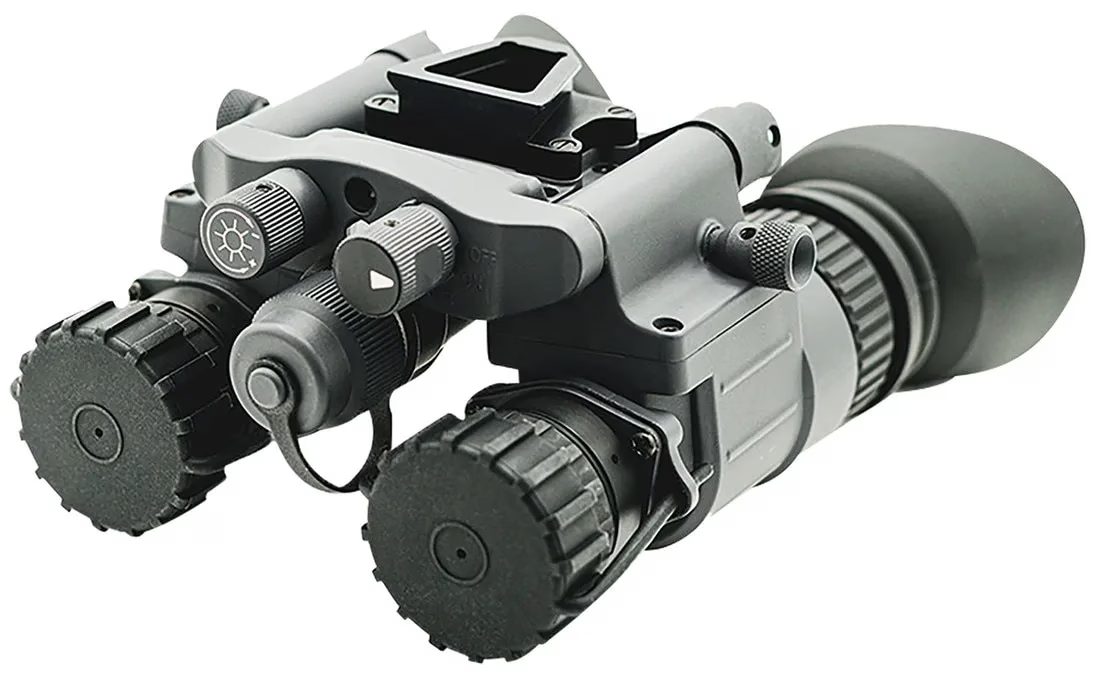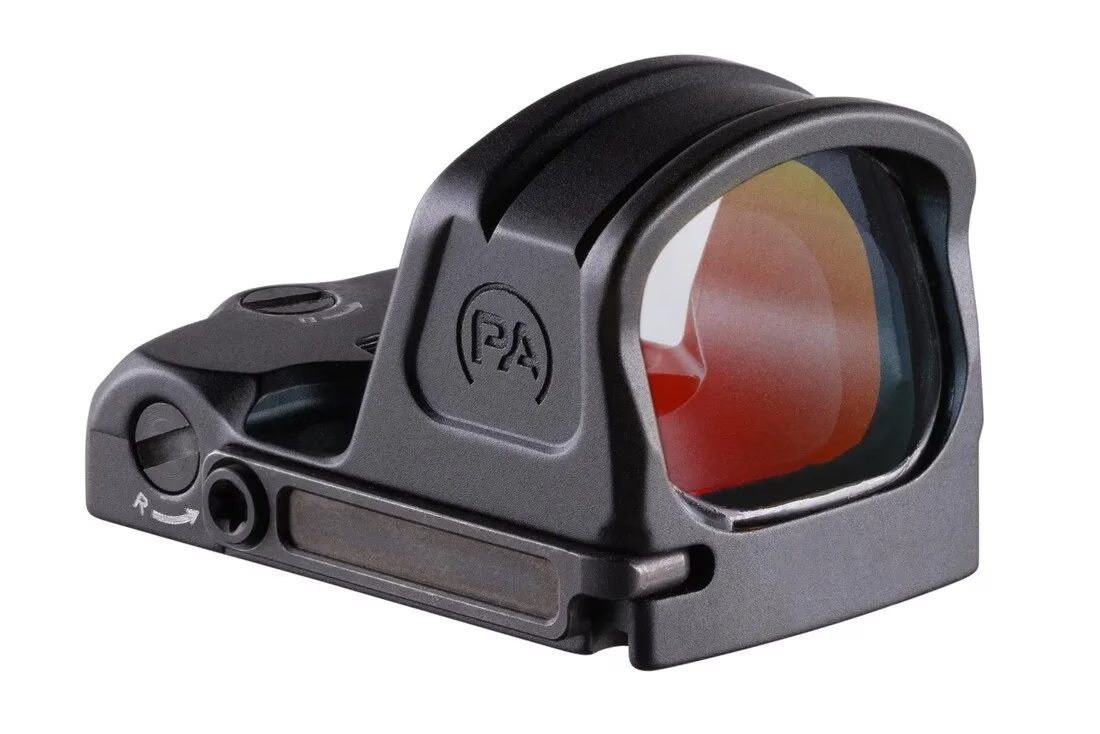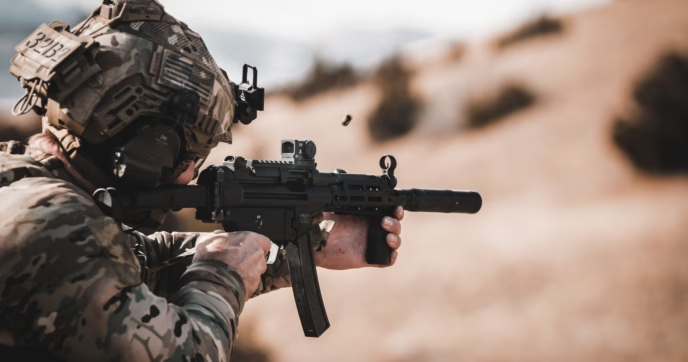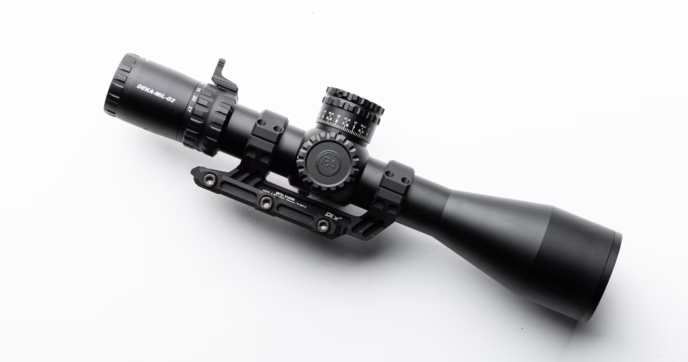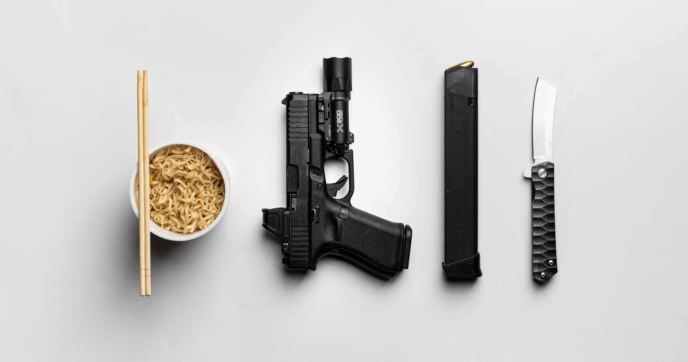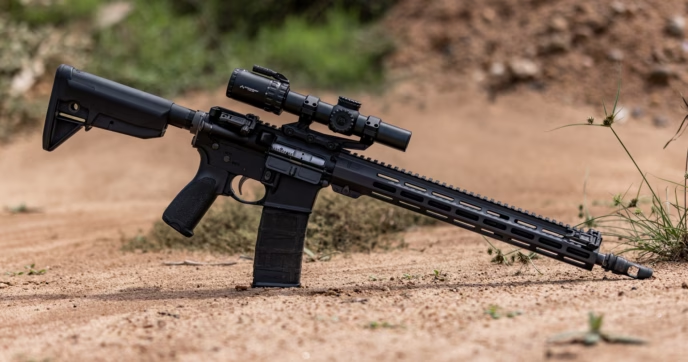For most of us, setting up a pistol for nighttime use means bolting on a weaponlight under the barrel. It’s an effective strategy for home defense or duty use, but if you want to be able to use your pistol with a night vision device, it gets a little more complicated.
Night vision always brings with it a certain set of challenges. Suddenly, you have to weigh the benefits of active vs passive aiming, deal with muzzle flare washing out your sight picture, and account for reflective splash when positioning your IR laser. Pistols, thankfully, are a bit easier to set up than rifles, but to get the most out of your NODs, you’re still going to need to configure your handgun thoughtfully and properly.
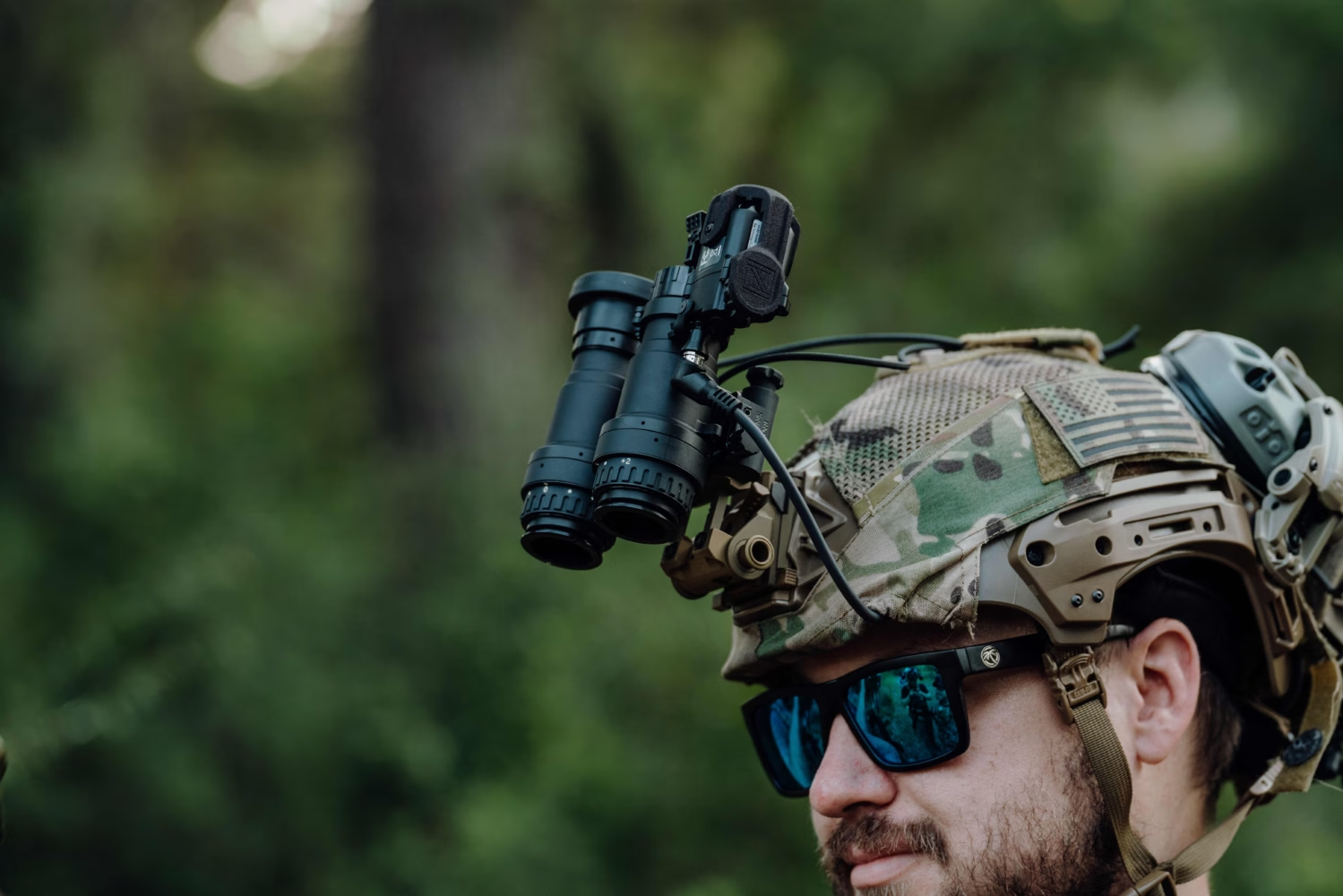
Setting Up A Pistol For Night Vision: Challenges and Objectives
The primary challenge with handgun marksmanship under night vision is aiming. Traditional iron sights simply aren’t up to the task, due largely to the difficulty in achieving a proper sight picture or front sight focus while wearing NODs. Additionally, some sights, such as tritium-powered night sights, may be difficult or impossible to use effectively. To aim your pistol effectively, you’ll need some sort of night vision compatible aiming device, whether active or passive—which we’ll cover in depth later on.
You also may find that your muzzle flash washes out your sight picture, particularly if you use a compensator. The bright burst of light, however brief, can obscure your vision and sometimes trigger auto-gating or gain adjustment, if your device is equipped with those features.
Lastly, as with a rifle, you may find that you have a need for some artificial illumination to augment the light-amplifying capabilities of your NVGs, particularly if you have tubes with specs on the lower end of their ranges. An active aiming solution, such as an IR laser, may also be desirable, although given how effectively red dots can be used for passive aiming on pistols, many forgo this altogether.
In sum, if you want to make the most of your night vision and engage targets quickly, efficiently, and effectively, it’s worth taking the time to invest in a few accessories to make your low-light and no-light marksmanship a little easier.
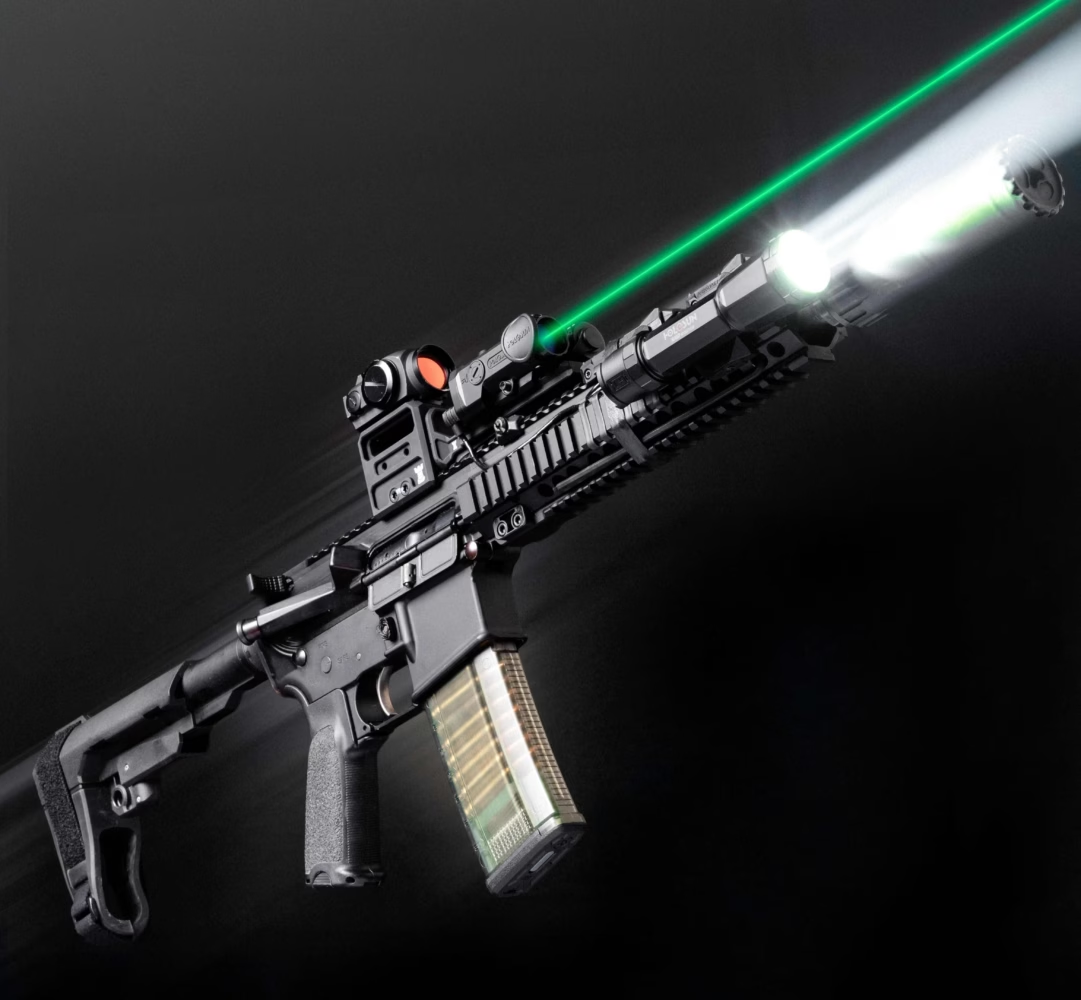
Active vs Passive Aiming
First and foremost, you’ll need to decide if you want passive or active aiming options, or both.
Active aiming devices are those that emit a light source that is visible to your target or other observers. The aforementioned example of an IR laser is the most common form of active aiming. Visible laser would also fall into this category, although those would not be used with night vision.
Passive aiming is the opposite—any form of aiming that does not emit a detectable signal to your surroundings. This includes iron sights, red dots, prisms, scopes, and any other form of optic that does not project a beam of light at the target.
Passive aiming is often preferred by police and military users because it avoids advertising their position the way active aiming solutions do. In essence, if you can see the beam of light pointing at your target, anyone else with night vision can do the same and trace the beam back to its source. While this is generally a non-issue for civilian users and hobbyists, some animals can also detect infrared light, so it may be a consideration for hunters.
The drawback to passive aiming is that it can be slower or more cumbersome than active aiming. With an IR laser, the user need only point the firearm at the target—a proper sight picture isn’t required. This is particularly valuable with rifles, as certain optics and nearly all iron sights can be very difficult to use with a night vision device mounted to one’s helmet.
However, because handguns do not have a stock to get in the way, they tend to be easier to passively aim with than long guns. For this reason, many users choose to forgo an active aiming solution for their handgun, but maintain one on their rifle.
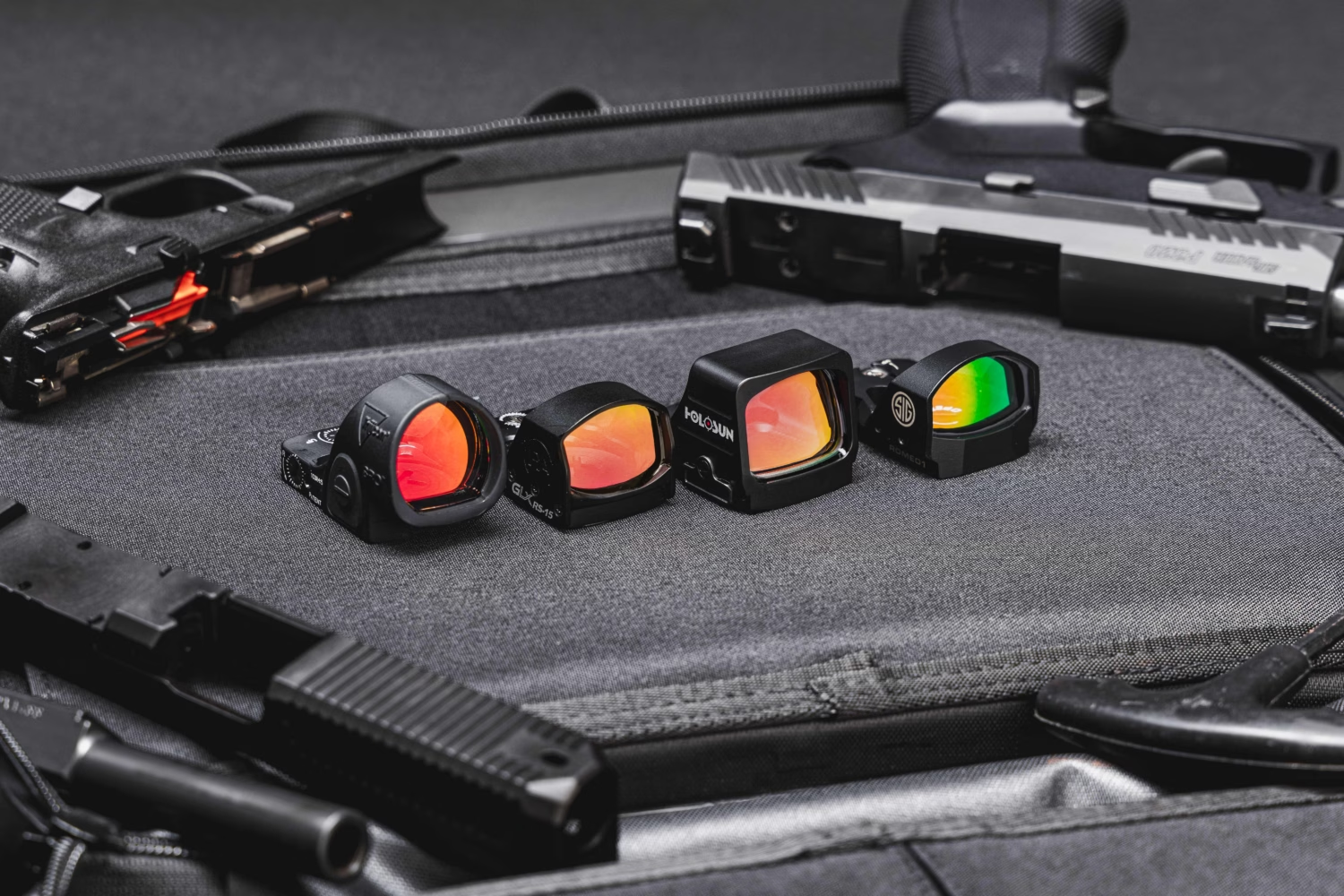
Optics and Sights
Both reflex optics and iron sights are viable options for use with night vision—you can choose either, or both, depending on your preference. As with daylight use, red dots will typically be easier to use, faster, and more effective, but iron sights are certainly capable when paired with a skilled user.
Your iron sights, whether primary or backup, should be as bland as possible. Simple black posts or generic three-dot sights work well for this application, as do old-school brass or gold bead sights.
Despite the name, tritium-illuminated night sights are arguably the worst possible choice for night vision. Their radioactive glow can range from barely discernible to stunningly bright to the unaided eye, but under night vision, the light they generate is amplified to the point of being detrimental. Similar to the effects of astigmatism, they become ambiguous blooms of light that can at best be used for gross aiming, but allow no precision. At their worst, they can entirely obscure your sight picture and make aiming all but impossible.
The primary goal for your iron sights in this scenario is not to obstruct your view of your optic. Fiber optic sights are generally fine for this purpose, but surprisingly small amounts of light can cause them to produce a similar bloom, so we would also consider them less than ideal compared to fully blacked-out sights.
When it comes to night vision compatible optics for your handgun, you’re essentially looking at different flavors of reflex sight. While rifles have more options for night vision-compatible optics, neither prisms nor holographic sights can yet be made small enough for a handgun.
The primary consideration when choosing an optic for this application is simply night vision compatibility. Sights that are labeled as night vision compatible will include one or more settings that are so dim as to be imperceptible to the naked eye, but appropriately bright under night vision without being so bright as to bloom or wash out your sight picture. The list of night vision compatible reflex sights is vast, including manufacturers like Trijicon, Primary Arms, Vortex, Holosun, and more, so you have plenty of options to choose from.
[Shop All Night Vision-Compatible Red Dots]
A secondary factor to consider is window size. Aligning your pistol for a proper sight picture tends to be a bit more difficult when wearing NODs. A large optic window allows for a greater margin of error when drawing and presenting your pistol—the larger the window, the more your pistol can be misaligned and still have the reticle in view.
An alternative solution is an ACSS® Vulcan® reticle, which utilizes a massive 250 MOA outer ring to indicate any misalignment to the user and allow for instant correction, similar to the way having the reticle in the window functions. If your dot is visible in your optic window, but not centered, you can instantly see how you need to adjust your alignment to center it. Often, this process happens so fast that we’re hardly conscious of making the correction—our brains just do it automatically.
Under ordinary circumstances, the Vulcan reticle functions similarly, but instead of relying on the dot, the outer circle is our indicator. When your handgun is properly aligned and the chevron or dot aiming point is in view, the outer circle sits outside the window and therefore outside the user’s field of view. When the optic is misaligned, however, the circle becomes visible, with the curvature of the circle providing that same instant feedback on how your firearm is misaligned, allowing for the same instantaneous correction.
Under night vision, though, the Vulcan reticle performs a little differently. Because of the short distance between the objective lens of your NODs and the optic, the outer circle remains visible even when the dot is centered. If misaligned, a portion of the circle will still typically be visible, and can be used to reorient yourself.
ACSS Vulcan reticles are available in a variety of Primary Arms optics, including the new PLx® HTX-1® red dot, as well as select Holosun optics.
Other considerations, such as battery life, open vs closed emitter, and optic footprint, are essentially unchanged whether your sight will be used in daylight or darkness, so we won’t rehash them here.
If you don’t already have one or more optic-ready handguns, we cover the various options available for installing a red dot on your existing pistol in our article on transitioning from iron sights to red dots.
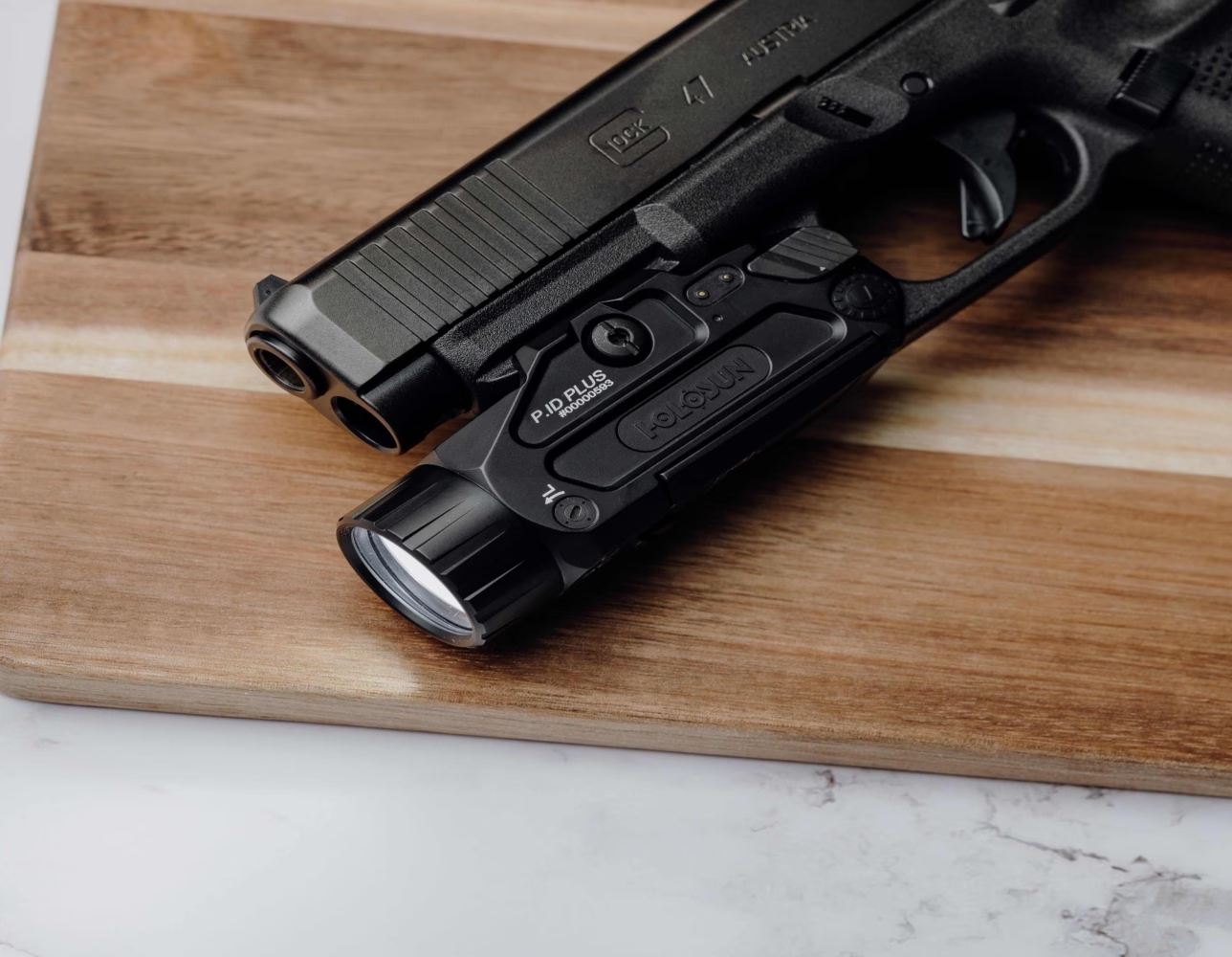
Lights and Lasers
Lasers and night vision tend to go hand in hand. Active aiming options like IR lasers have a lot of advantages, particularly for rifles that are equipped with an optic that is difficult to use with head-mounted night vision. Handguns, though, do not suffer from this problem; it’s typically no more difficult to use a handgun with a night-vision compatible red dot sight with NODs than it is to use it during the day.
For that reason, lasers are considerably less common on pistols than rifles. However, if you still want an active aiming solution, there are a variety of options available.
IR illuminators are a much more common accessory. Rather than providing an aiming point, IR illuminators offer a way to light up an area that does not have sufficient ambient light for your night vision to be effective without advertising your position. They can also be used to defeat photonic barriers, a concept we explore in depth in our Ultimate Guide to Night Vision.
High-quality IR lights are available from most major weaponlight manufacturers, including Streamlight and SureFire.
The TLR-VIR-II is Streamlight’s most popular model. In many ways, it mimics their exceptionally popular TLR-1 series of lights, with intuitive switches and a system of interchangeable rail keys for optimal fit on nearly any handgun with a Picatinny rail. The TLR-VIR-II can provide both infrared and visible white light and even integrates an IR laser, offering a huge range of capabilities for its price point.
SureFire offers the X300 Vampire, a variant of their iconic X300 series of lights with an infrared-capable head. It also offers both white light and IR function, which can be rapidly selected by simply twisting the head of the flashlight. Like the standard X300, the X300V is available in both A and B versions, each with its own quick-attachment method.
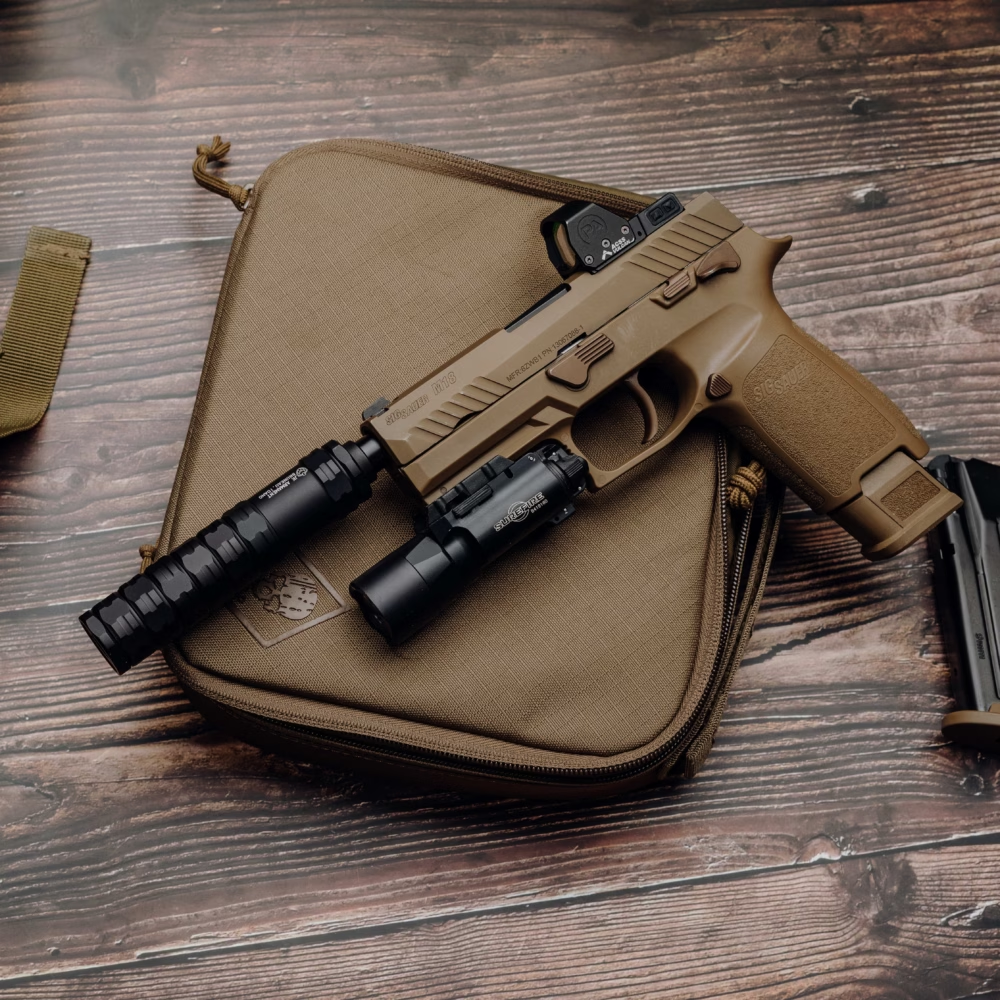
Muzzle Devices
For a pistol night vision setup, your muzzle device selection is as much about what you shouldn’t have as it is what you should. A pistol with a bare muzzle is typically perfectly serviceable for nighttime use, but it’s wise to avoid compensators if you plan to use your pistol with night vision.
While compensators can be a valuable and effective tool for reducing felt recoil, they function by redirecting hot gas created by the gunshot up, forcing the muzzle of the pistol down. This also has the effect of directing a larger portion of the blast, sound, and light up—directly into your field of view.
In the daylight, this is generally not an issue. Most ammunition does not produce enough flash to obscure your sight picture in the daylight, if it is even visible at all. Under night vision, though, that flash can easily be blinding.
For that reason, the best muzzle device for a pistol configured for night vision is a suppressor. Many suppressors do an excellent job of mitigating or eliminating muzzle flash, in addition to protecting your hearing and reducing your overall signature. A suppressor protects your night vision from the muzzle flash and preserves your sight picture, letting you get back on target faster.
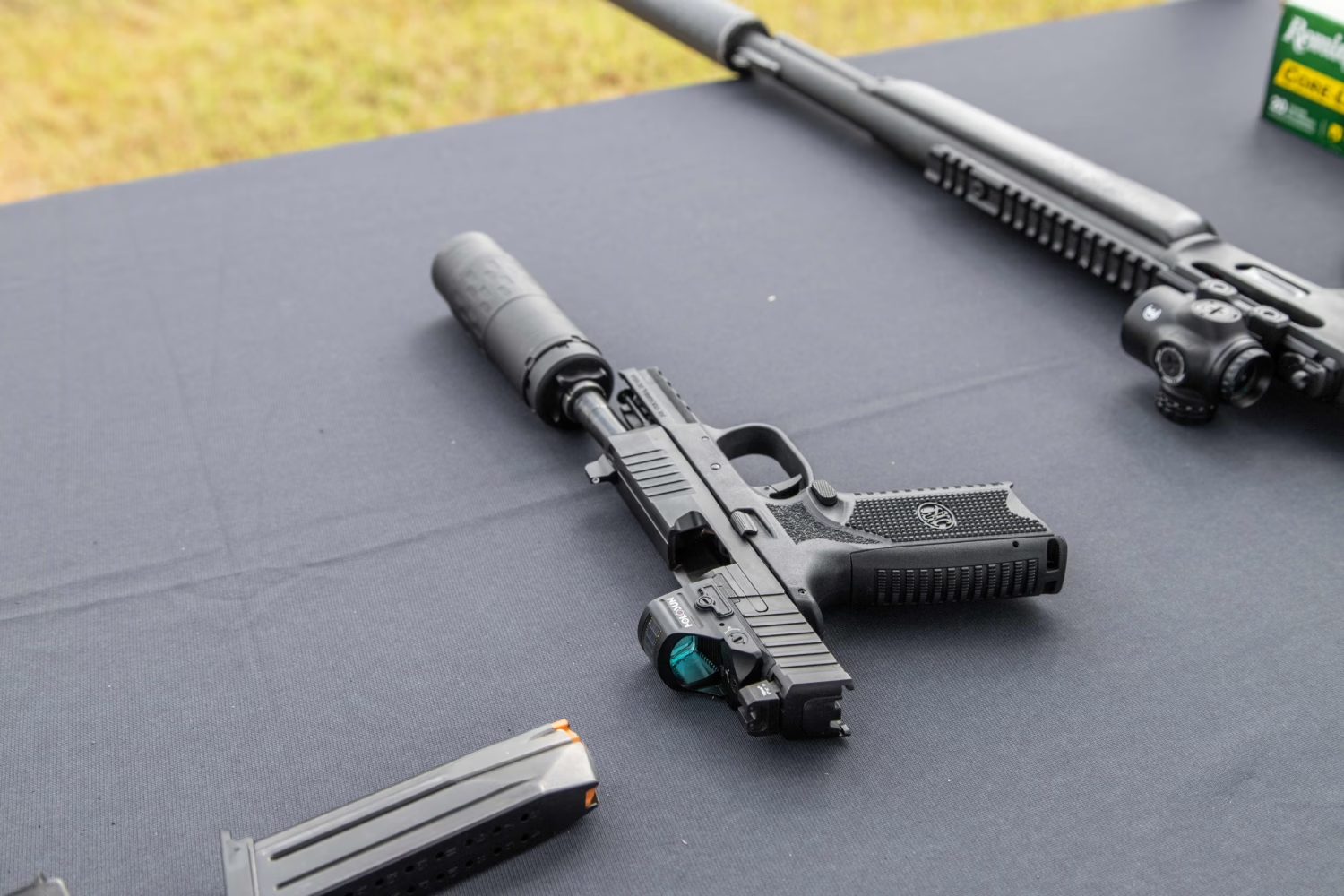
Conclusion
Pistols tend to be easier to set up for night vision than rifles, but they still require some knowledge and effort to perform optimally. Start by equipping your handgun with a night-vision compatible optic or iron sights, then outfit it with an IR illuminator, laser, or suppressor as your application necessitates and your wallet permits.
